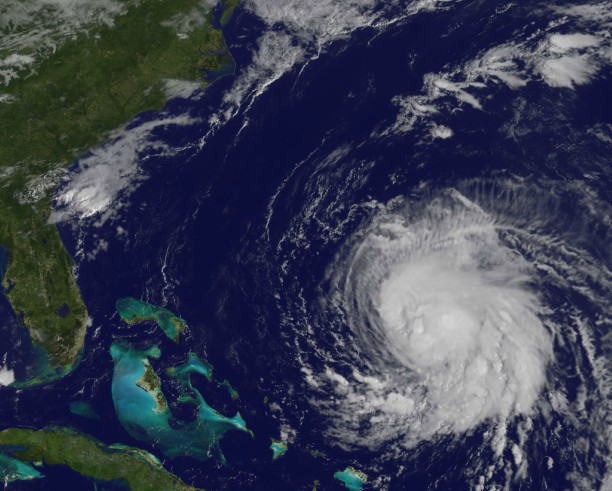People across the country woke up Tuesday to a tsunami warning from the National Weather Service, but the federal agency says there is no such threat, it was simply a test.
The alert popped up as a phone notification for many mainly on the East Coast through weather apps like Accuweather. “Severe Weather Alert,” the notification read, “Tsunami Warning in effect for [Location]. Source: U.S. National Weather Service. ”
I did a quintuple take
tsunami warning? pic.twitter.com/i8TifRMkMR
— bryan ? (@barduuuk) February 6, 2018
People reported receiving the alerts in New York, Massachusetts, Florida, Louisiana, Texas and more.
The warning sparked concern, prompting National Weather Service branches across the country to clarify on Twitter that there is no tsunami warning, and it was a test conducted early Tuesday morning.
***THERE IS NO TSUNAMI WARNING***
A Tsunami Test was conducted earlier this morning, that did have TEST in the message. We are currently trying to find out how a message went out as a warning. We will update you when we find out more.
— NWS New York NY (@NWSNewYorkNY) February 6, 2018
The initial notification that popped up on phones did not have the word “test,” according to screenshots.
But if the user clicked through to the full message in some cases, the alert did say “This message is for test purposes only. This is a test to determine transmission times involved in the dissemination of tsunami information.”
That distinction was not enough for people who said the initial notification sent them into a panic.
“Hey Accuweather,” tweeted one Brooklyn man who got the alert through that app. “Next time you have a tsunami warning test — especially in coastal areas — you might want to lead with the world ‘test’ in your alerts.. Not bury it inside.”
Hey @accuweather — next time you have a tsunami warning test — especially in coastal areas — you might want to lead with the word “test” in your alerts.. not bury it inside. #tsunami #AccuWeather #abc7ny pic.twitter.com/nPFJ9dC59F
— Anthony Hazell (@anthonyhazell) February 6, 2018
“PSA: if you send out a tsunami warning to people in a coastal area, please put ‘TEST’ or something in the headline,” tweeted another.
Frank Nocera, a meteorologists with the National Weather Service Boston office, said that the message originated from the Tsunami Warning Center in Alaska, and the National Weather Service offices across the country just rebroadcast that message.
“It got coded wrong and it was just a test,” he said. “Every so often we do test messages to make sure they get transmitted properly.”
The error also led to some jokes referencing the recent false missile alert in Hawaii. In a response to the National Weather Service New York Twitter account clarifying the warning, one person responded, “I guess we found out where the guy from Hawaii got reassigned to.”
I guess we found out where the guy from Hawaii got reassigned to
— ?️? James ?️? (@JamesBaker1993) February 6, 2018
On way to work and received a Tsunami warning from my weather app. But it’s just a test. Looks like that guy in Hawaii has been promoted. #Tsunami #tsunamiwarning
— frankeloy abreu (@yanksrookie) February 6, 2018
When asked if these false messages are a concern or make it more difficult to relay real information, Nocera said that sometimes, simply, mistakes happen — but test warnings are still an important tool.
“Technology is great but sometimes things get coded improperly,” he said. “We have to do these test messages, it’s important to make sure all our communication systems are working properly. Maybe it’s a good thing it was caught during a test, not during a real situation.”
These errors shouldn’t be tolerated at all though, said Dr. Irwin Redlener, director of the National Center for Disaster Preparedness, and this instance shows a need for a “thorough review” of all warning systems.
“These kinds of false alarms make it very difficult to communicate credibly in the event of an actual emergency,” he said. “A zero tolerance for errors has to be the goal here, because when the real things happen, to the extent that we have skepticism in the public because of a history of false alarms, that’s extremely dangerous.”
“I think this is hopefully a wake-up call for other emergency response agencies, the people who normally issue warnings,” he added, “that it’s time to double check, triple check all sytems to make sure that whatever causes these mishaps does not occur.”
Susan Buchanan, the director of public affairs for the National Weather Service headquarters, confirmed in a statement that the National Tsunami Warning Center sent out a “routine” test message around 8:30 a.m. Tuesday and they are looking into why it displayed as an actual warning.
“The test message was released by at least one private sector company as an official Tsunami Warning, resulting in widespread reports of tsunami warnings received via phones and other media across the East Coast, Gulf of Mexico, and the Caribbean,” she said.
“We’re currently looking into why the test message was communicated as an actual tsunami warning,” she added, “and will provide more information as soon as we have it. Officials are being notified that there is no threat.”


















